The Taj Mahal is recognised, the world over, as a symbol of love. It was commissioned by the Mughal emperor, Shah Jahan, of India to be the tomb of his much loved second wife Mumtaz Mahal and it is now one of the New7 Wonders of the World, a UNESCO world heritage site and one of the most visited tourist attractions in the whole of India. Here are ten interesting facts about Taj Mahal, the jewel in the Indian city of Agra that attracts around 3 million visitors every year.
1. It took 22 years to build
The building of the Taj Mahal was started one year after the death of the Empress Mumtaz Mahal and it took almost twenty two years to complete the entire construction. The total cost of the building is thought to have been in the region of 32 million Indian rupees, which would be the equivalent of a massive $1 billion today.
2. The emperor was utterly heartbroken when his wife died
The Taj Mahal was built in memory of the Shah Jahan’s third wife, who died while giving birth to the couple’s fourteenth child. It is said that the emperor was so heartbroken that he was left a broken man after his wife’s death and within just a few months, his beard and his hair had turned snow white with his grief.
3. 1,000 elephants and 20,000 men built the Taj Mahal
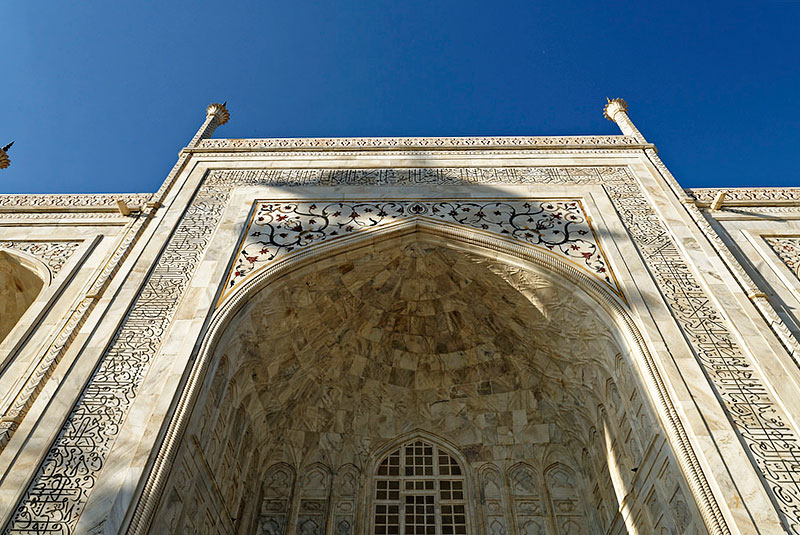
Construction of the massive structure began in 1663, so there were no modern construction techniques, machinery, nor means of transport available then. The architect behind the construction of the Taj Mahal was Ahmed Lahauri, and he employed 20,000 people to work on the mammoth building project; 1,000 elephants were also used to bring the marble and other materials that were needed to the construction site.
4. The Taj Mahal changes colour through the day
Another one of interesting facts about Taj Mahal is that the beautiful white marble that was used to create the building changes colour at different times of the day. First thing in the morning, it takes on a shade of pink from the rising sun, it glows bright white in the middle of the day and, it turns gold with the evening setting of the sun. The changing colours are said to reflect the changing moods of a woman.
5. The Taj Mahal is perfectly symmetrical
Another one of fascinating and interesting facts about Taj Mahal is that the building is perfectly symmetrical on all sides. The only things in the Taj Mahal that are not in keeping with this symmetry are the tombs themselves of the Emperor and his wife. The Emperor’s tomb is larger than his wife’s, as was the tradition at that time. You might also notice that the four minarets are standing some distance from the main building and that they tilt slightly away from it. That was so that, if they were ever to fall in an earthquake, they would not damage the main structure.
6. Materials were brought from all around the world
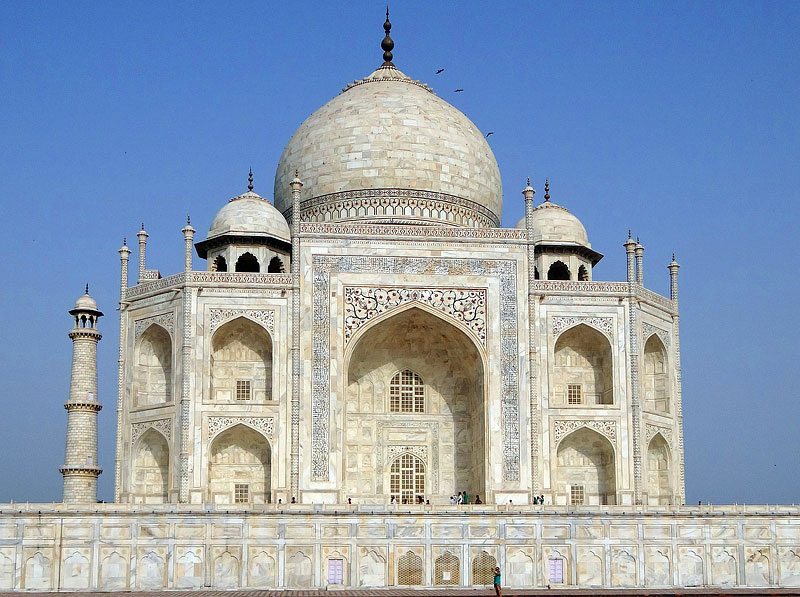
It is believed that there are over 28 different types of semi-precious and precious jewels embedded in the walls of the Taj Mahal that were brought from all around the world to decorate the building. The white marble itself was brought by elephant from Rajasthan and the jewels included jade from China and turquoise from Tibet.
7. It is a myth that workers on the Taj Mahal were put to death
There are myths that anyone who worked on the Taj Mahal was put to death afterward, so that they could never build a similar building for anyone else. There is no evidence to back this up at all, but it is believed that architects and artists who did work on the Tahj Mahal, were made to sign contracts that prohibited them from using the designs for the building anywhere else.
8. There are inscriptions all over the Taj Mahal
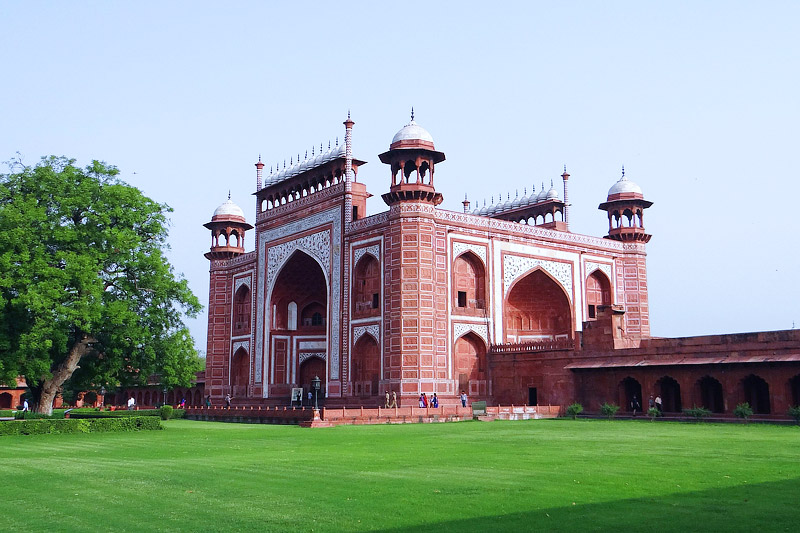
Another one of interesting facts about Taj Mahal is that the building has intricate inscriptions on both the outsides and the insides of the walls. The calligraphy includes many praises for the Empress Mumtaz Mahal, as well as religious inscriptions. The inscription on the Great Gate reads this: “O Soul, thou art at rest. Return to the Lord at peace with Him, and He at peace with you.”
9. The black Taj Mahal is also a myth
There is also a myth that an identical, black, Taj Mahal was planned to be built on the opposite side of the Yamuna River. There were, what appeared to be, pieces of black marble found at the site, but these later turned out to be pieces of discoloured white marble left behind after the construction of the white Taj Mahal.
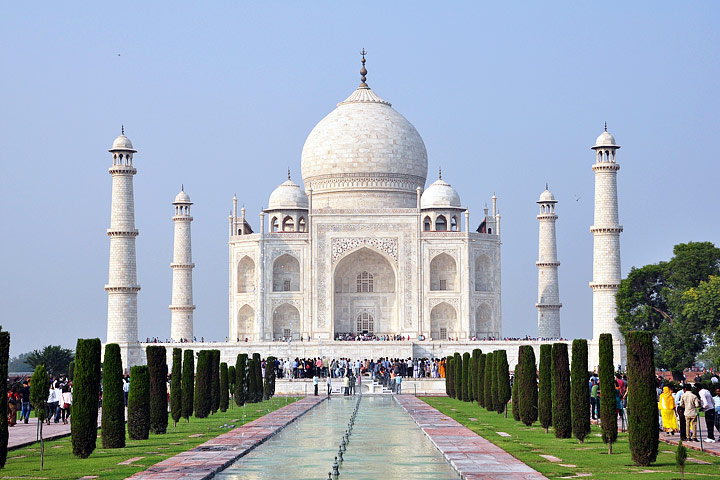
10. The Taj Mahal was damaged in the 1857 rebellion
By the end of the 19th century, the Taj Mahal had fallen into disrepair and it was further damaged by British troops during the Indian uprising when they defaced the building and removed precious stones from the walls. At the end of the 19th century, though, the British viceroy Lord Curzon made amends by ordering the restoration of the building and the gardens that surround it.

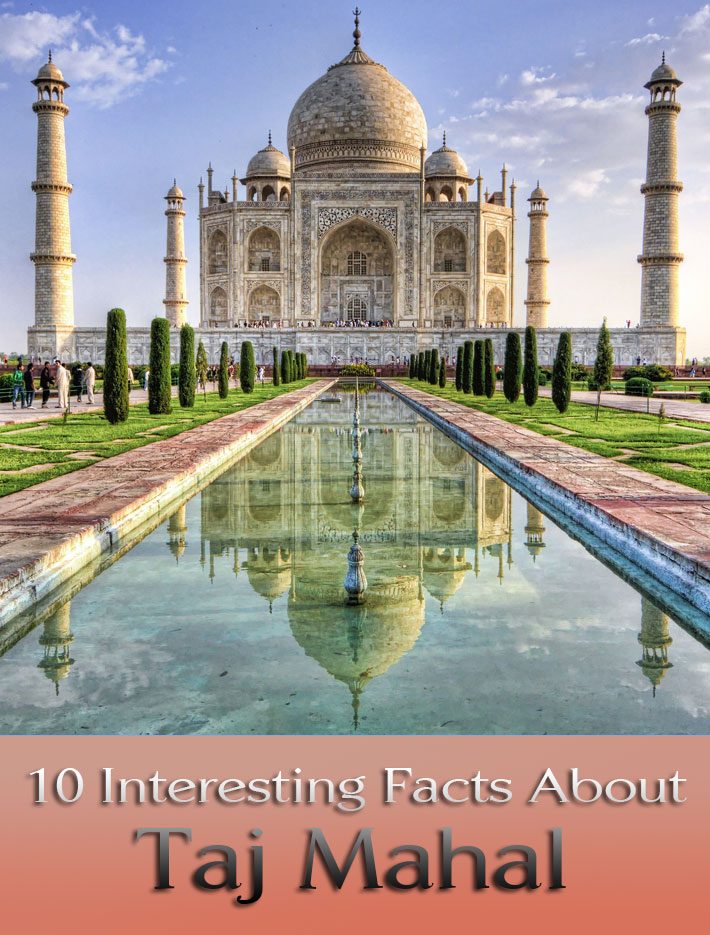
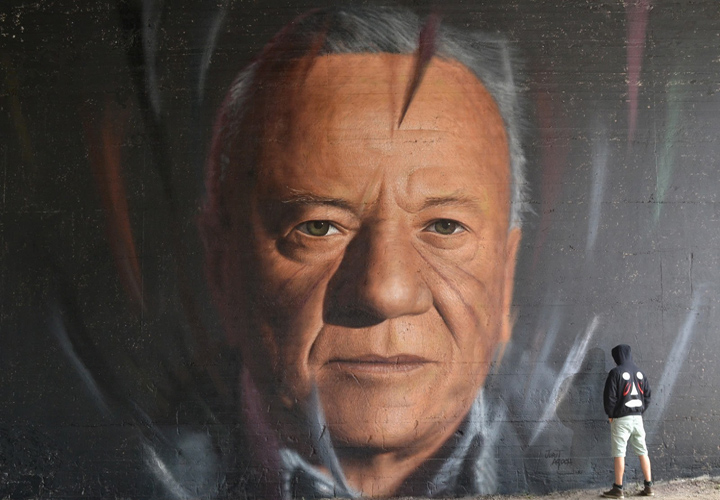
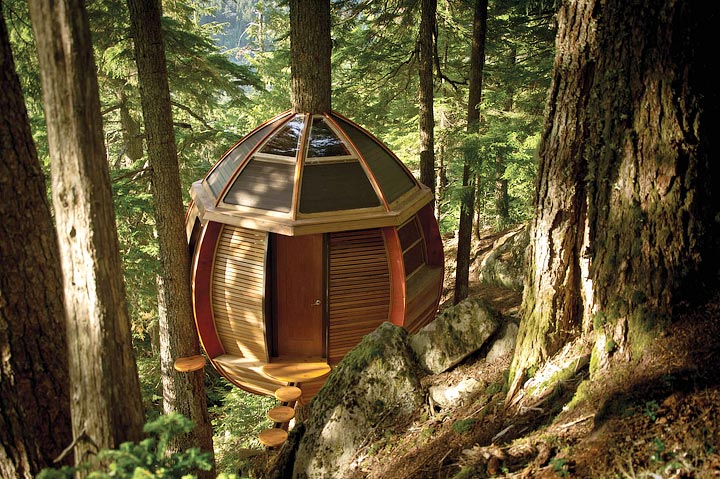

Leave a Reply